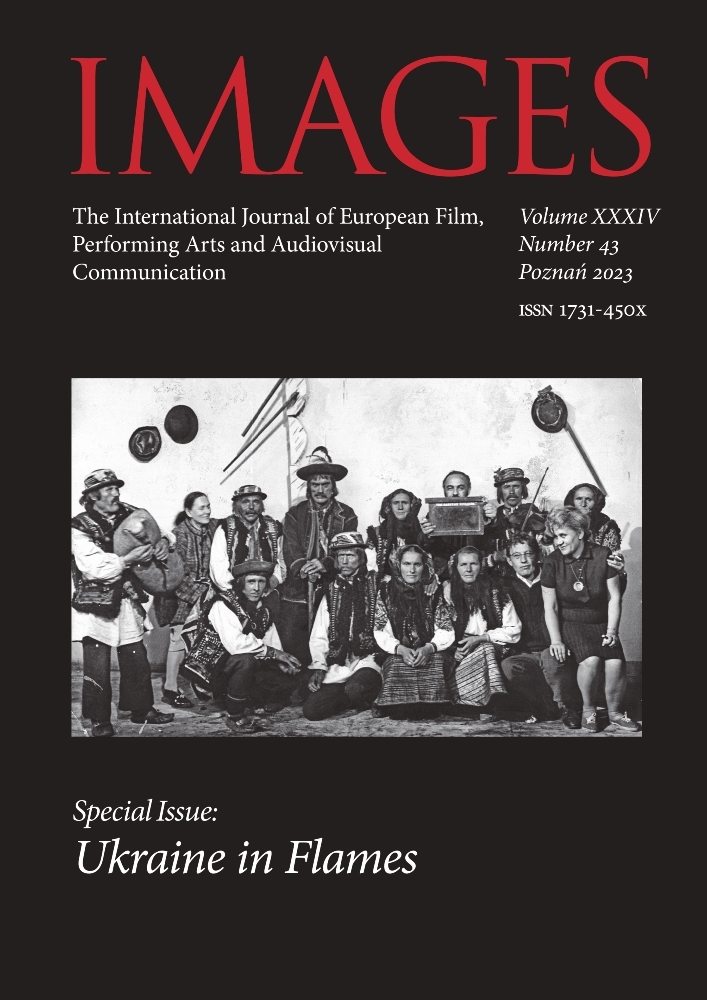Abstrakt
The article covers the thematic and genre diversity of non-fiction cinema in Ukraine, which following the country’s regaining its independence in 1991, launched a reflection on previously hushed-up topics that were prohibited or covered in a tendentious manner in the Soviet period. The number of films and TV series grew, and the ideological gap between film artists and political elites (partly pro-Russian) resulted in their mass distribution being prevented. This was especially evident in the several-year delay and limits placed on showing the long-awaited series “Unknown Ukraine. Essays of Our History” (1993, NKU-Kyivnaukfilm, 144 films). Quantitative and qualitative changes in this type of cinema over the last three decades are analyzed in this article, presenting periods of its ups and downs, which are synchronized with changes in political processes in Ukraine. It shows how after the mass protests of the Euromaidan Revolution in 2014 and the beginning of the Russian-Ukrainian war, the number of such films increased significantly, providing a considerable informative and educational impact.
Bibliografia
Briukhovetska L., Hidden Films: Ukrainian Cinema of the 1990s, Kyiv 2003 Hoseiko L., History of Ukrainian Cinema 1896–1995, Kyiv 2005
Marchenko S., History as an image: material and image. Aspects of cinematography of the history of Ukraine, “Russian question” 2008, no. 3, http://www.russkiivopros.com/index.php?csl=38 (accessed: 29.09.2022); Detector media, 16.01.2009, https://detector.media/withoutsection/article/42639/2009-01-16-istoriya-yak-zobrazhennya-material-ta-obraz/ (accessed: 29.09.2022)
Marchenko S., Media aberrations as an urgent problem, “Kino-Teatr” 2016, no. 3, pp. 13–15
Marchenko S., Prejudice. What image of the Ukrainian is “sculpted” by some masters? “Ukrainian Culture” 2001, no. 8, p. 4
Marchenko S., The film “The Slovo Building” as a change of the state attitude to documentary cinema, “Kino-Teatr” 2018, no. 3, pp. 4–8, http://archive-ktm.ukma.edu.ua/show_content.php?id=2163 (accessed: 29.09.2022)
Marchenko S., The forgotten anniversary of the series “Unknown Ukraine: Essays on Our History” as an indicator of the state of non-fiction cinema, media, film education, and socjety, “Scientific Bulletin of the I.K. Karpenko-Karyi Kyiv National University of Theater, Cinema and Television” 2019, no. 25, pp. 50–60, http://nv.knutkt.edu.ua/article/view/188208 (accessed: 29.09.2022).
Marchenko S., Ukrainian non-fiction cinema and its prospects, [in:] The energy of revival. Ukrainian cinema 2014–2020. Cinematographic studios. Issue thirteen. Collective monograph, compiler and scientific editor L. Bryukhovetska, Kyiv 2022, pp. 122–135
Licencja
Prawa autorskie (c) 2023 Serhiy Marchenko

Utwór dostępny jest na licencji Creative Commons Uznanie autorstwa 4.0 Międzynarodowe.

